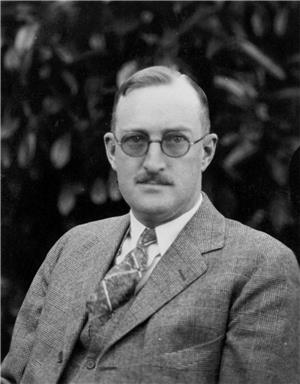On September 26, 1934, the United Aircraft and Transport Company formally ceases to exist. The giant conglomerate, which includes Boeing and Sikorsky aircraft, United Air Lines, Pratt & Whitney engines, and Hamilton Standard propellers, is a target of federal anti-trust investigations of air mail contracts and airlines. Compelled by new rules to break up his empire, a bitter William E. Boeing (1881-1956) severs his relationship with the company he founded.
The Boeing Conglomerate
The development of United Aircraft and Transport began in 1927, when Boeing won a U.S. Post Office contract to deliver airmail between Chicago and San Francisco. On February 1, 1929, William Boeing and Fred Rentschler, president of Pratt & Whitney engines, incorporated United Aircraft and Transport, led by executives Claire Egtvedt (d. 1975) and Philip G. Johnson (d. 1944). United quickly acquired Hamilton and Standard propellers, Chance-Vought, Northrop, Sikorsky (a major seaplane builder before it pioneered helicopters), and Stearman, which established Boeing's future base in Wichita, Kansas. (This company was headquartered in New York City.)
In 1931, Boeing consolidated several regional air carriers to create United Air Lines with a exclusive Post Office license for serving northern tier states between Chicago and the West Coast. The Hoover Administration had approved and even encouraged such conglomerations as essential to the future of America's aircraft and airline industries.
Boeing Cracks Up
With the Democratic landslide of 1932, industry critics such as U.S. Senator Hugo Black (later a Supreme Court Justice) launched public investigations of "spoils conferences" sponsored by the Post Office to allocate lucrative air mail contracts. Boeing was subjected to special and harsh scrutiny.
Amid the growing scandal, President Franklin Roosevelt (1882-1945) cancelled all airmail franchises on March 10, 1934, and turned over the mails to poorly equipped Army pilots. Ten perished during the following two weeks, and the Post Office quickly solicited new private carriers. In a move clearly aimed at Boeing, new Postmaster General James Farley and, later, Congress banned the award of the new contracts to any companies that also built aircraft.
Boeing was forced to dissolve United Aircraft and Transport as a result. United Air Lines was reincorporated as an independent company on May 1, 1934, and its former president, Phil Johnson, headed north to help organize Trans-Canada Airlines (he was called back to United during World War II). The Boeing Airplane Company was reorganized on July 19 under the leadership of Claire Egtvedt, and United Aircraft and Transport officially ceased to exist on September 26, 1934. An embittered William E. Boeing sold all of his stock and other than a brief executive stint during World War II played no further role in his namesake company.

